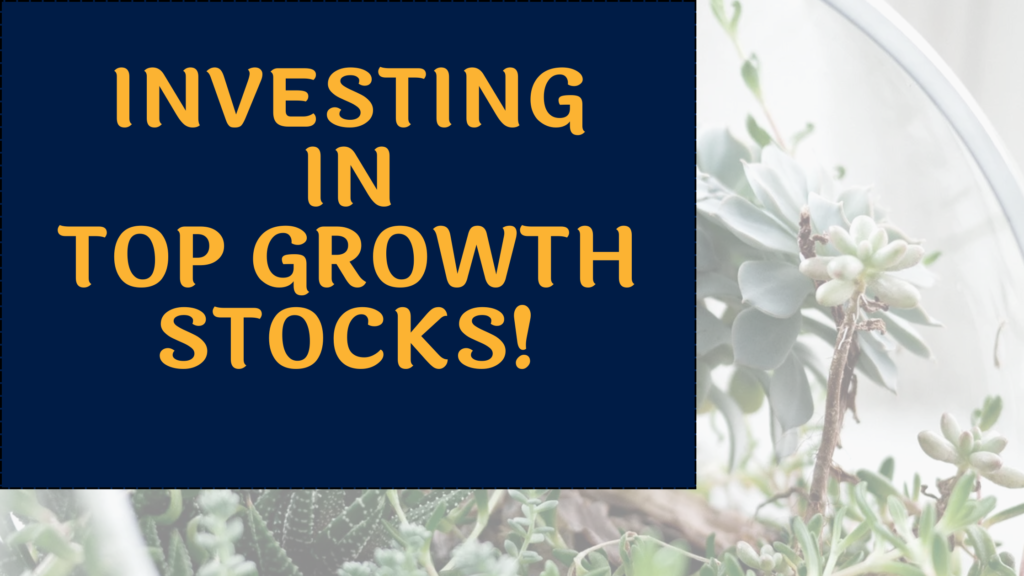Key Takeaways
- Growth stocks have the potential for high returns through innovative products and services.
- Screening tools can help identify top growth stocks with strong revenue growth.
- Fundamental analysis can enhance stock selection by evaluating market trends and economic moats.
- Diversifying a portfolio with top growth stocks can reduce risk and increase returns.
- Regularly rebalancing the portfolio helps maintain optimal performance.
Best Growth Stocks 2024: Investing in Top Growth Stocks with Huge Disruptive Potential – Growth investing has proven to be extremely profitable, particularly with funds like Cathie Wood’s ARK Innovation ETF (ARKK) showcasing impressive returns. This success is largely attributed to disruptive growth stocks that leverage technological advancements to revolutionize their industries. These companies create simplicity and accessibility, driving down costs with their innovative products or services. In this blog, we will explore the characteristics of growth stocks and provide insights on how to identify top growth stocks with huge disruptive potential.
What is a Growth Stock?
Growth stocks are companies that increase their revenue and earnings faster than most in their industry. They achieve exponential growth by developing innovative products or services that gain market share from competitors or create entirely new industries. These high-growth stocks are often rewarded by the market, delivering substantial returns to shareholders. Although growth stocks tend to be more expensive with higher price-to-earnings (P/E) and price-to-sales (P/S) ratios, they offer significant returns when they realize their growth potential.
How to Find Growth Stocks
Identifying the best growth stocks involves using a screening tool to scan thousands of stocks and filter those with strong revenue growth. For example, you can use a tool to screen for US stocks with a market cap of mid-cap and above, and revenue growth greater than 20%. This generates a list of over 500 stocks meeting the criteria, such as Apple, which had a revenue growth of 21.4% in the last year.
Once you have the list, running a fundamentals backtest can further select the top growth stocks. This involves using signals like revenue growth, profit growth, and price-to-sales ratio to rank the stocks. The selected stocks can then be included in a diversified portfolio.
Backtesting Growth Investing Strategy
Backtesting is an essential step to validate the growth investing strategy. By selecting the top 250 stocks from the screening results and running a fundamentals backtest, you can build a portfolio of top growth stocks. Using signals such as revenue growth, profit growth, and price-to-sales ratio, you can rank the stocks and select the top 30 for the portfolio. This approach ensures the portfolio is diversified with low concentration risk.
The backtest results can reveal the strategy’s performance, such as an annualized return of 32%, a volatility of 25%, and a maximum drawdown of 39%. Comparing this with ARK Innovation ETF (ARKK), you can see significant correlation due to similar exposure to growth stocks.

If you want to stay updated with the latest investment tips and strategies, subscribe to our newsletter. Get exclusive insights and expert advice to help you make informed investment decisions.
Fundamental Analysis of Growth Stocks
For qualitative investors, fundamental analysis can further enhance stock selection. This involves looking at the business model, growth potential, and market trends. For instance, Fiverr, an online marketplace for freelancers, has seen revenue growth of over 80% year-over-year due to the rise of the gig economy and work-from-home trends.
Another example is CrowdStrike, a leader in cybersecurity. Its use of artificial intelligence to learn from previous cyber attacks gives it a strong economic moat, creating a barrier against competitors and protecting its market share.
Practical Tips for Growth Investing
- Diversify Your Portfolio: Spread your investments across different sectors to reduce risk.
- Research Thoroughly: Understand the market, potential risks, and expected returns.
- Consider Valuation: Look for companies with strong revenue growth but reasonable valuations.
- Use Screening Tools: Utilize tools to filter and identify potential growth stocks.
- Rebalance Regularly: Adjust your portfolio to maintain optimal performance and reduce risk.
Investing in top growth stocks with huge disruptive potential can be highly profitable for long-term investors. By using screening tools, running fundamentals backtests, and conducting thorough fundamental analysis, you can identify and invest in stocks that are poised for exponential growth. Diversifying your portfolio and regularly rebalancing it can help manage risk and maximize returns.
Extended Insights on Investing in Top Growth Stocks
Investing in top growth stocks requires a keen eye for innovation and market trends. Companies that are at the forefront of technological advancements or are creating new markets often have the potential to disrupt traditional industries. These companies typically reinvest their earnings into research and development, which can lead to breakthrough products and services that drive their growth.
Screening Tools for Identifying Growth Stocks
Utilizing screening tools effectively can simplify the process of identifying top growth stocks. These tools allow investors to filter through thousands of stocks based on specific criteria such as revenue growth, market capitalization, and sector. By setting parameters like revenue growth greater than 20% and market cap of mid-cap and above, investors can narrow down their search to a manageable list of potential high-growth stocks.
For example, a screening tool might highlight companies like Tesla, which has demonstrated substantial revenue growth through its innovative electric vehicles and energy solutions. Similarly, companies in the biotechnology sector, such as Moderna, have shown rapid growth due to advancements in medical research and vaccine development.
Fundamentals Backtest: A Strategy for Growth Investors
Running a fundamentals backtest is crucial for validating a growth investing strategy. This process involves selecting a subset of stocks from the screening results and analyzing their past performance based on fundamental metrics. By focusing on signals such as revenue growth, profit growth, and price-to-sales ratio, investors can rank the stocks and select the top performers for their portfolio.
Backtesting results can provide insights into the strategy’s effectiveness. For instance, selecting the top 30 stocks based on these criteria might reveal an annualized return of 32%, with a volatility of 25% and a maximum drawdown of 39%. Comparing these results to benchmarks like the ARK Innovation ETF (ARKK) can help investors gauge the strategy’s performance relative to the broader market.
Importance of Fundamental Analysis in Growth Investing
While quantitative screening and backtesting are valuable, fundamental analysis adds another layer of insight. This qualitative approach involves evaluating a company’s business model, competitive advantages, and market position. For instance, examining the economic moat of a company like CrowdStrike can reveal its competitive edge in cybersecurity through its use of artificial intelligence and data analytics.
Similarly, understanding market trends can provide context for a company’s growth potential. For example, the rise of remote work and the gig economy has driven significant growth for platforms like Fiverr. By analyzing these trends, investors can make informed decisions about which growth stocks have the potential to disrupt their industries and deliver substantial returns.
Practical Tips for Successful Growth Investing
Investing in top growth stocks requires a strategic approach. Here are some practical tips to enhance your growth investing journey:
- Diversify Your Portfolio: Avoid putting all your investments into a single sector or company. Diversification can help spread risk and improve overall returns.
- Research Thoroughly: Take the time to understand the market dynamics, potential risks, and expected returns of each stock. Comprehensive research is key to successful investing.
- Consider Valuation: While growth stocks often have higher valuations, it’s important to assess whether the company’s growth potential justifies its price. Look for companies with strong fundamentals and reasonable valuations.
- Use Screening Tools: Leverage technology to filter and identify potential growth stocks. Screening tools can save time and provide a data-driven approach to stock selection.
- Rebalance Regularly: Periodically review and adjust your portfolio to maintain optimal performance. Rebalancing helps manage risk and ensures that your investments align with your goals.
The Future of Growth Investing
Investing in top growth stocks with huge disruptive potential offers a pathway to significant returns for long-term investors. By leveraging screening tools, conducting thorough fundamental analysis, and implementing a disciplined investment strategy, you can identify and invest in stocks that are poised for exponential growth. Diversifying your portfolio and regularly rebalancing it will help manage risk and maximize returns, ensuring a robust and resilient investment journey.
Additional Resources
- Investopedia: Growth Stocks
- NerdWallet: How to Invest in Growth Stocks
- Forbes: Best Growth Stocks to Buy
Stay Informed with Our Newsletter
Ready to start investing in top growth stocks? Subscribe to our newsletter for more valuable insights and tips to help you achieve your financial goals. Don’t miss out on our expert advice and latest updates!
By understanding the nuances of growth investing and applying these strategies, you can position yourself to capitalize on the disruptive potential of top growth stocks. Whether you’re a seasoned investor or just starting, the key to success lies in staying informed, diversifying your investments, and maintaining a disciplined approach. Happy investing!
We’d love to hear from you! Do you have any favorite growth stocks? Share your thoughts and experiences in the comments below. If you have any questions, feel free to ask—we’re here to help!





